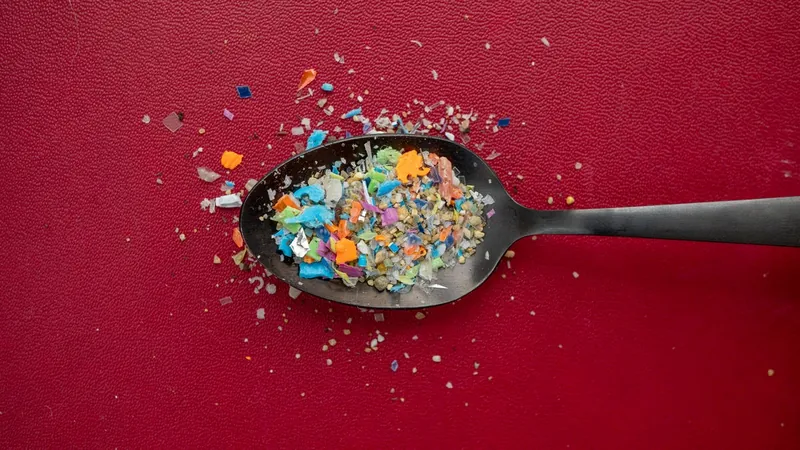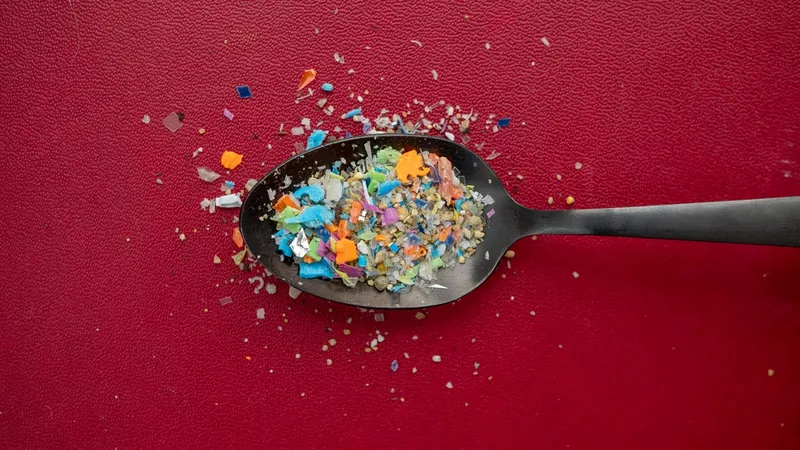
Ditch the Plastic: 7 Kitchen Items Sneaking Microplastics into Your Meals
2025-09-06
Author: Chun
Microplastics: A Hidden Health Hazard
Microplastics aren’t just a trendy topic; they’re a concerning reality in our daily lives. These minuscule plastic fragments infiltrate the air we breathe, the water we drink, and yes, even the food we consume. Recent studies indicate that these tiny pollutants not only circulate through our systems but can accumulate in our tissues, particularly in vital organs, potentially leading to serious health issues such as dementia.
The Kitchen: A Microplastic Minefield
Perhaps the most surprising aspect of this crisis is how prevalent microplastics are in our kitchens. From food storage to cooking utensils, plastic is omnipresent—unless we take proactive steps to reduce our exposure. Discover how these common kitchen items might be unwittingly contributing to your microplastic intake.
What You Need to Know About Microplastics
Research shows that each year, humans inhale up to 22 million micro and nanoplastics. These particles enter our bodies primarily through inhalation, ingestion, or skin contact, which raises alarming questions about their impact on our health. Studies link microplastics to serious issues like heart disease, stroke, and even cancer, and behavioral changes in animals, such as reduced fertility.
7 Sneaky Sources of Microplastics in Your Kitchen
Here are the top culprits that could be sabotaging your health right under your nose:
1. Nonstick Cookware
That shiny nonstick pan in your kitchen may be leaching microplastics into your meals. Recent research suggests that cookware coated with Teflon can release millions of particles, especially if damaged.
2. Plastic Food Containers
Your takeout containers might be carrying more than just your favorite meal. Heating or washing these plastic receptacles can release harmful microplastics into your food.
3. Plastic Utensils
Using plastic utensils, particularly with hot foods, can result in microplastics mingling in your meals, which you unknowingly ingest.
4. Tea Bags
Sipping tea could mean sipping microplastics too! Many tea bags contain polypropylene, which breaks down into plastic particles when brewed.
5. Certain Spices
That paprika or cinnamon in your pantry could be contaminated. Studies have shown that plastic packaging for spices often contains microplastics.
6. Plastic Straws
Plastic straws aren’t just a menace to marine life; they can release microplastics and are a frequent source of hidden pollution.
7. Canned Food Linings
If you think you’re safe with canned goods, think again. Many non-BPA linings still contain microplastics, which could pose similar health risks.
How to Protect Yourself: Simple Kitchen Upgrades
Embrace a healthier lifestyle with these smart swaps:
- Opt for Wooden or Stainless Steel Utensils
Trade plastic spatulas for wooden or stainless steel versions to reduce your microplastic intake.
- Choose Glass or Stainless Steel Food Containers
Avoid plastic food storage by using glass or ceramic containers that won’t leach microplastics.
- Switch to Loose Leaf Tea
Ditch tea bags for loose leaf varieties, which can be brewed in stainless steel strainers.
- Buy Spices in Bulk or Glass Containers
Select bulk spices or those in glass containers to minimize microplastic contamination.
- Use Reusable Metal or Bamboo Straws
Replace plastic straws with eco-friendly options like metal or bamboo straws.
- Prefer Fresh or Frozen Produce
Skip canned goods in favor of fresh or frozen foods that are not packaged in plastic.
- Upgrade Cookware to Cast Iron or Stainless Steel
Consider investing in cast iron or stainless steel pots and pans for a safer cooking experience.
The Bottom Line: Stay Informed, Stay Safe
With microplastics lurking in our kitchens, being mindful of what we use is crucial. While research is ongoing, avoiding microplastics where possible can significantly improve your health and well-being.



 Brasil (PT)
Brasil (PT)
 Canada (EN)
Canada (EN)
 Chile (ES)
Chile (ES)
 Česko (CS)
Česko (CS)
 대한민국 (KO)
대한민국 (KO)
 España (ES)
España (ES)
 France (FR)
France (FR)
 Hong Kong (EN)
Hong Kong (EN)
 Italia (IT)
Italia (IT)
 日本 (JA)
日本 (JA)
 Magyarország (HU)
Magyarország (HU)
 Norge (NO)
Norge (NO)
 Polska (PL)
Polska (PL)
 Schweiz (DE)
Schweiz (DE)
 Singapore (EN)
Singapore (EN)
 Sverige (SV)
Sverige (SV)
 Suomi (FI)
Suomi (FI)
 Türkiye (TR)
Türkiye (TR)
 الإمارات العربية المتحدة (AR)
الإمارات العربية المتحدة (AR)